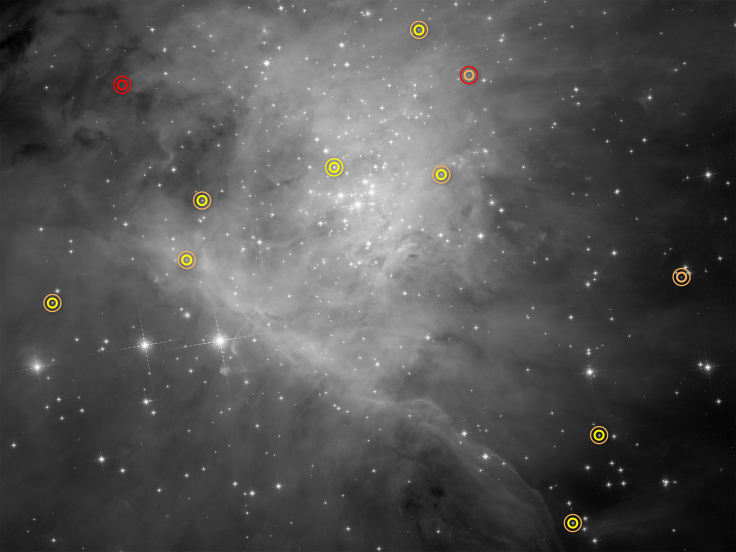Hubble Identifies Abundance Of Brown Dwarfs With Water In Their Atmospheres In Orion Nebula

With the help of the Hubble Space Telescope, a NASA team has discovered a patch of low-mass brown dwarf planets in the Orion Nebula with water in their atmospheres, according to a release from NASA.
The population of brown dwarfs is the largest known to researchers and they’re all surrounded by a population of newborn stars as well. In addition to the brown dwarfs and the newborn stars the researchers working with the Hubble data also found three giant planets in the area, said a release from Hubble.
Brown dwarfs are classified by a mass between that of a giant planet and a small star and are referred to as “failed stars.” The cores of brown dwarfs never heat up enough for the planets to undergo nuclear fusion, or the process that powers stars and causes them to burn to bright. Instead they have extremely low mass and give off almost no visible light making them nearly impossible to see. Brown dwarfs have to be detected by infrared telescopes with the water in their atmospheres as a key identifier.
The water vapor forms in the atmosphere because the brown dwarfs are so cool in temperature. “Water is a signature of substellar objects. It’s an amazing and very clear mark. As the masses get smaller, the stars become redder and fainter, and you need to view them in the infrared. And in infrared light, the most prominent feature is water,” Massimo Robberto from the Space Telescope institute in Baltimore said, according to a NASA release.
The team found 17 brown dwarfs that were paired with red dwarfs, one pair of brown dwarfs, and only one brown dwarf that was paired with a planet that was neither red or brown dwarf. In the photo below, the red circles represent planets, the orange ones indicate the brown dwarfs, and the yellow circles are for stars.
The Orion Nebula, or Messier 42, is highly studied by astronomers and researchers because it sits just 1,500 light-years from Earth. It’s also what NASA refers to as a factory for star formation. The nebula itself can be seen with the naked eye from Earth because it is so incredibly bright, it appears much like a star would in Orion’s belt. NASA recently released a visualization of the nebula that takes viewers on a three-dimensional journey through the star cluster.
© Copyright IBTimes 2024. All rights reserved.





















